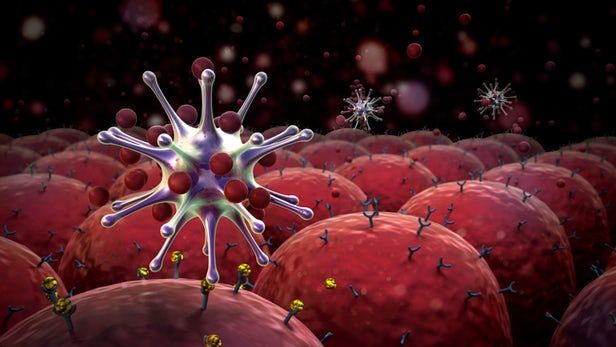Promising early results are in from a phase 1 clinical trial into the safety and efficacy of a new cancer vaccine. The new treatment is designed to stimulate the immune system into attacking certain cancers known to overexpress a specific protein.


Liz talking about gene therapy.
Liz Parrish in conversation with Nick Delgado, PhD, ABAAHP, CHT, Lifestyle Anti-Aging Medicine Author.
During the insightful conversation, they cover subjects such as the state of the art in life extension science and technologies as well as BioViva’s plan (the company of Liz Parrish) to ensure being one of the leading companies in the growing field of celular rejuvenation for treating / curing old-age related diseases, poised to become the biggest industry ever in the human kind during the next two decades.
I would like to thank Liz Parrish and Nick Delgado for allowing me to be present during the conversation and record it with my mobile phone.

Perhaps you read the stories last week (including the NYT piece linked to below) about the researchers at Johns Hopkins, led by Gul Dolen, who gave ecstasy (MDMA) to octopuses and found that they, like humans, became more social on the drug. Dr. Dolen talked about using the octopus as a model organism in neuroscience research during last Friday’s day-long workshop hosted by the NIH BRAIN 2.0 working group.
By dosing the tentacled creatures with MDMA, researchers found they share parts of an ancient messaging system involved in social behaviors with humans.

And yet, today, the struggle against HIV may be undergoing a sea change.
U.S. health officials and HIV experts are beginning to talk about a future in which transmission in the United States could be halted. And that future, they say, could come not within a generation, but in the span of just a few years.
“We have the science to solve the AIDS epidemic,” Dr. Robert Redfield, the director of the CDC, himself a longtime HIV researcher and clinician, told STAT in a recent interview. “We’ve invested in it. Let’s put it into action.‘’

The Milky Way has a violent past. When it isn’t swallowing renegade sausage galaxies, it seems to be waging endless games of interstellar tug-of-war with its nearest galactic neighbors — and not always winning. According to a new study published Sept. 19 in the journal Nature, one such encounter ended with a cosmic wound to the Milky Way’s disk that still hasn’t fully healed, 300 million years later.
That wound, researchers say, is visible in a cluster of several million stars that are not behaving as they should be. While still rotating around the Milky Way’s galactic center, these rogue stars also orbit around one another in a wobbly, spiral pattern that has only become more tangled over the past eon. [Big Bang to Civilization: 10 Amazing Origin Events]
“We have observed shapes. [of star clusters] with different morphologies, such as a spiral similar to a snail’s shell,” lead study author Teresa Antoja, a researcher at the Institute of Cosmos Sciences (ICCUB) at the University of Barcelona, said in a statement. “These substructures allow us to conclude that the disk of our galaxy suffered an important gravitational disturbance.”

Home kits could one day allow diabetes patients to make their own insulin — potentially saving them thousands of dollars a year.

But where advocates like Foxx mostly see the benefits of transhumanism, some critics say it raises ethical concerns in terms of risk, and others point out its potential to exacerbate social inequality.
Foxx says humans have long used technology to make up for physical limitations — think of prosthetics, hearing aids, or even telephones. More controversial technology aimed to enhance or even extend life, like cryogenic freezing, is also charted terrain.
The transhumanist movement isn’t large, but Foxx says there is a growing awareness and interest in technology used to enhance or supplement physical capability.
This is perhaps unsurprising given that we live in an era where scientists are working to create artificial intelligence that can read your mind and millions of people spend most of their day clutching a supercomputer in their hands in the form of a smartphone.


LOS ANGELES (PRWEB) September 27, 2018
The Arch Mission Foundation today announced the creation of an archive of knowledge encoded into synthetic DNA by Microsoft, Twist Bioscience Corporation, and the University of Washington to be included in the Lunar Library™. The DNA Archive will feature 10,000 crowdsourced images and the full text of 20 important books, among other items. The data is encoded into billions of synthetic DNA molecules and encapsulated for long-term preservation. Collectively this data will represent the first Special Collection of the Lunar Library, which the Arch Mission Foundation announced last spring.
The Arch Mission Foundation sought partners that could help curate these materials and assist in achieving a remarkable collection that reflects both the best of human knowledge, as well as the most ambitious technical abilities in the emerging new field of molecular data storage. Molecular data storage is a new technology for storing and retrieving data from molecules of synthetic, non-living DNA.